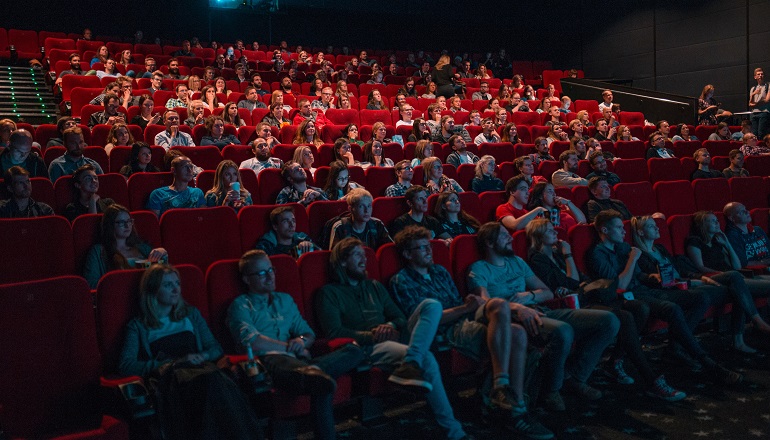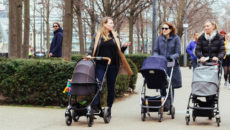I thought I was prepared for everything. As an adoptive mom and an information-obsessed reporter, I believed I had read, heard, and learned pretty much all there was to know about raising an adopted child. I had mastered the lingo, prepared for the big questions, and, most importantly, had learned to listen to my inner voice (the one that keeps me from smacking people who ask my 8-year-old daughter if she still speaks Russian, even though they know she was adopted as an infant).
But nothing prepared me for the media’s serial assaults on adoption. Heck, I’m even a member of that family. Who knew it would turn on me? Of course, adoption has long been a favorite subject of the film industry. I’m told there’s nary a Shirley Temple movie where she had parents for the entire 90 minutes.
Even so, I was taken by surprise at Stuart Little, many years ago. Everything was peachy until Stuart’s adoptive parents willingly turned him over when the rats claiming to be his birth parents showed up at the door. (Actually, they were mice, but they had a rat attitude.) No fight, not even an objection. It was a jarring moment for me, but when I glanced at my preschooler, she seemed unfazed. Later, I realized she was probably too young to equate rodents and adoption issues. But the adoption community noticed some heavy-duty reactions in older kids who caught on, and word got out that this movie deserved a permanent place on the Must Avoid list.
It was at age 6 that my daughter’s antennae kicked in, and came around to kick me in the butt. It was spring break, and I thought it would be nice for her to see The Ten Commandments, an epic film that would make her religious studies come alive. Big mistake. There was mighty Moses doing his moral thing and defending the weak. Early on, we find out he was adopted. “Very cool,” I tell my daughter, reminding her that she’s in good company.
Then it comes. Moses meets his birth mom and siblings, and in an instant gives his adoptive queen mom the see ya salute. When the commercials came, so did the questions. We had 120 seconds to talk this out. “Why did Moses leave his mom,” asks my daughter. “Why didn’t he just give his birth family some money and visit them?” She was clearly fascinated by Mosess choice, but the notion of switching families gave her the heebie jeebies.
Truth be told, on occasion the film industry gets it right. The Tigger Movie is a great example. Tigger, the happy, bouncy, lovable character from Winnie the Pooh, longs for a family and discovers his heart’s desire within his group of animal friends. For grown-ups, Lovely and Amazing also handles it well. Among the characters are a 50-plus, single white woman and her adopted daughter, an 8-year-old African-American girl. The daughter is quick to correct an adult who refers to her birth mother as her mom, and there is a heart-wrenching moment when she talks about ripping off her skin to be like her adoptive mom.
On the other hand, the holiday film Elf, ironically billed as a family film, does everything wrong from beginning to end (see sidebar).
[Adoption Films for Family Movie Night]
Here are tips to get through the movie moments that make you want to throw popcorn at the screen:
- Let your child react. If he’s uncomfortable with what he hears on screen, don’t shush him. Have a couple of back-and-forth whispers, acknowledge his feelings, and ask if he wants to leave. When we went to a screening of Country Bears, my normally even-tempered daughter was visibly stirred by a nasty remark about adoption. She promptly agreed when asked if she wanted to walk out. It was a good lesson in civic protest.
- After the film, address the issue. On the bus ride home from Country Bears, I suggested to my daughter that we write to Disney to tell them what they got wrong.
- Give a heads-up. Let other adoptive parents know when you’ve seen something even mildly offensive. Some years back, in an episode of The Wild Thornberries—normally an innocuous Nickelodeon program—a cartoon character made a wisecrack about adoption. Boy, were they inundated with mail. They pulled the episode.
- What if she doesn’t react? If your child seems unmoved by something that makes your head explode, ask yourself whether she’s suppressing something. If the remark doesn’t bother her, leave it alone. You may want to get your ya-yas out by writing a letter, but keep it to yourself. If you’re certain that she’s stuffing it, broach the subject in what I call a by-the-way moment. Say something like, “By the way, I wondered what you thought about that scene in ________?” After she responds, tell her what you didn’t like, and why. You might be putting away dishes together or doing a treasure hunt in your jewelry box, but this type of gentle sideswiping can open the door to important discussions.
[Instant eBook: Adopting a Newborn in the U.S.]
Memo to the Screenwriters Guild: Don’t mess with the adopted kid. His parents bite.



